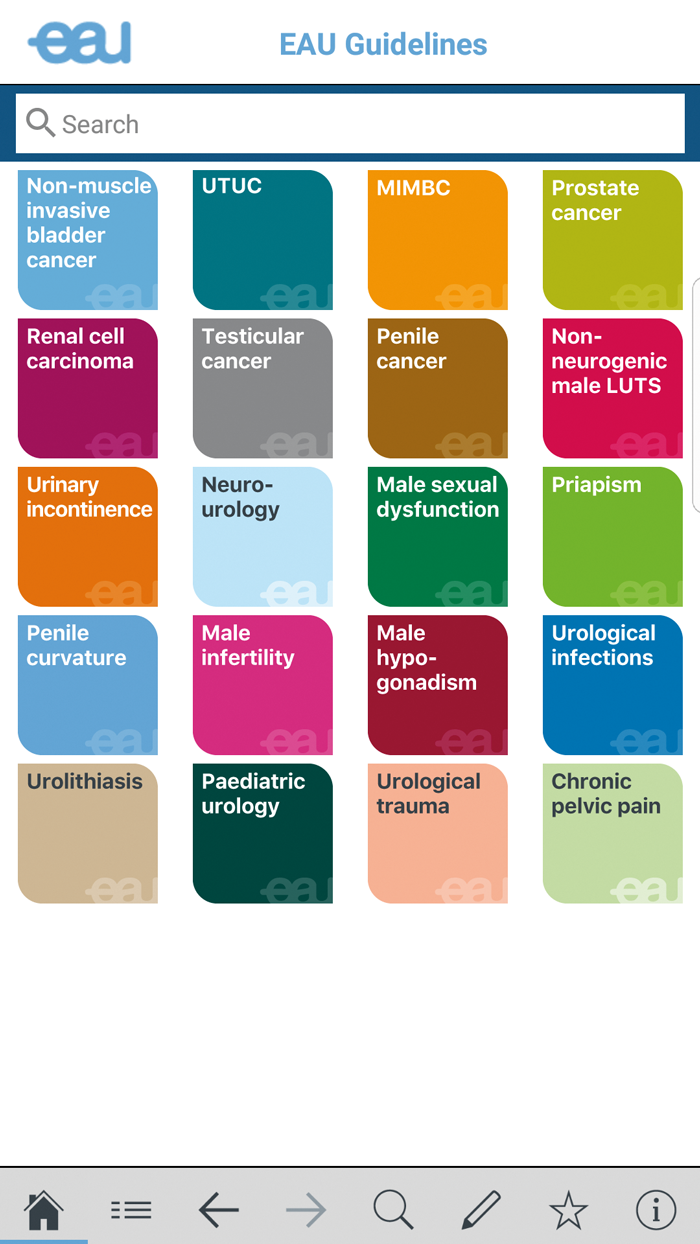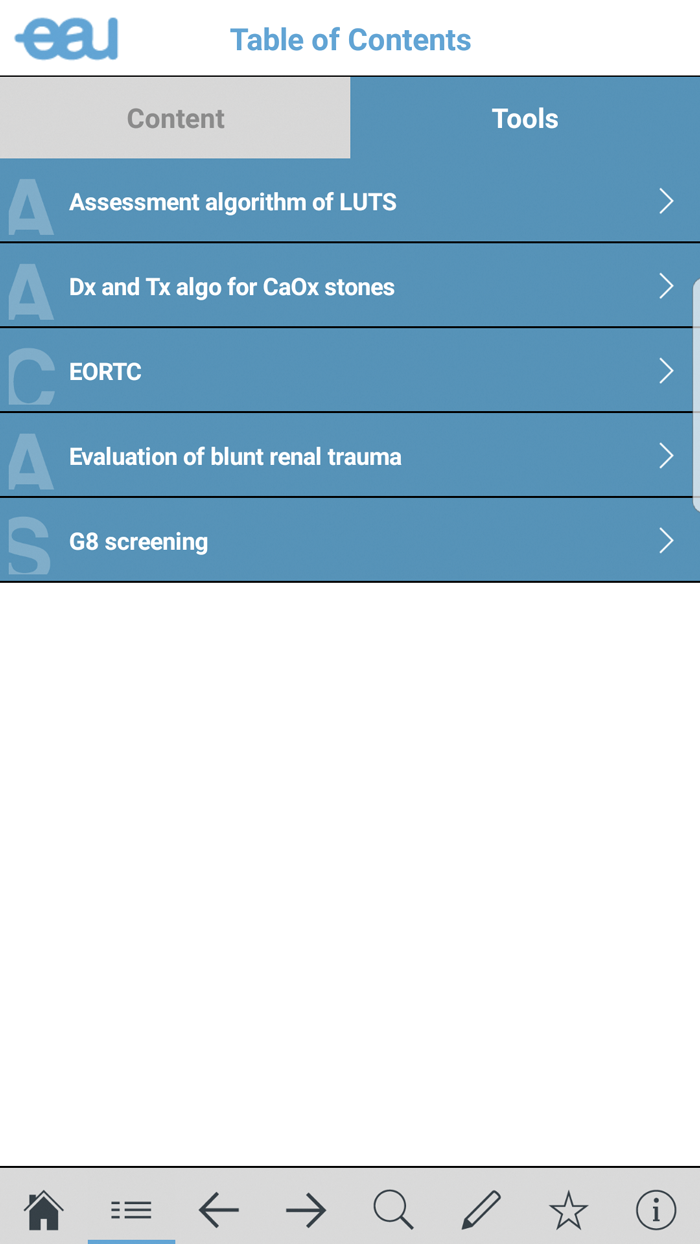The European Association of Urology (EAU) continues to lead on the latest guidelines within urology. The all new EAU guidelines app brings together the pocket version of the EAU guidelines with a much improved user interface. Both the cancer and benign guidelines are now displayed on one screen. Guidelines can now be accessed through touch responsive squares. The most significant improvement is the division of guidelines into sub-sections so that access to the relevant sections is now possible in a clinic or in a multidisciplinary meeting. This means that the guidelines are finally more useful in app form, rather than in their original paper or pdf document format.
The EAU Guidelines app is available from the Google Play Store or iTunes (free download). Once downloaded the app requires you to log in using your European Association of Urology account. There were no alternative purchase options at the time of this review (March 2017).
The main navigation bar is along the bottom and allows access to the home screen, a list page of either guidelines or tools, forward and back, and search (Figure 1). You can also access notes or favourite sections using the bottom pencil and star icons.

Figure 1.
The app contains a tools section which includes a number of calculators and algorithms (Figure 2). In the non muscle invasive bladder cancer guideline there is a sub-menu of either the guidelines or the European Organisation for Research and Treatment of Cancer (EORTC) risk calculator. The calculators and algorithms that are present are well designed and work seamlessly.

Figure 2.
My main problem with the app is its brevity as it is a replacement to the EAU pocket guidelines app (2015 version) which has now been discontinued. The brevity of this version of the guidelines could be viewed as both a strength and a weakness. My personal preference would be to have a version of the full guidelines in a similar app with linked references in this format. I would also like to see individual users be able to further customise the app through either uploading their own pictures or documents so that they can make it relevant to their clinical practice. The user interface could still be improved to minimise the number of touches users have to make to find the relevant section. However, overall, it is definitely a giant step in the right direction.
As it is free for members, the EAU Guidelines App should be on every member’s and urologist’s smartphone or tablet. The concise guidelines would be valuable to a wide range of healthcare professionals in urology especially in clinical situations. With only small further refinements, I believe that all new full editions of the guidelines should be available in a similar format so that the knowledge contained within the guidelines is more easily accessible.





